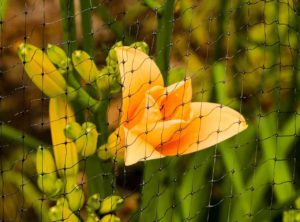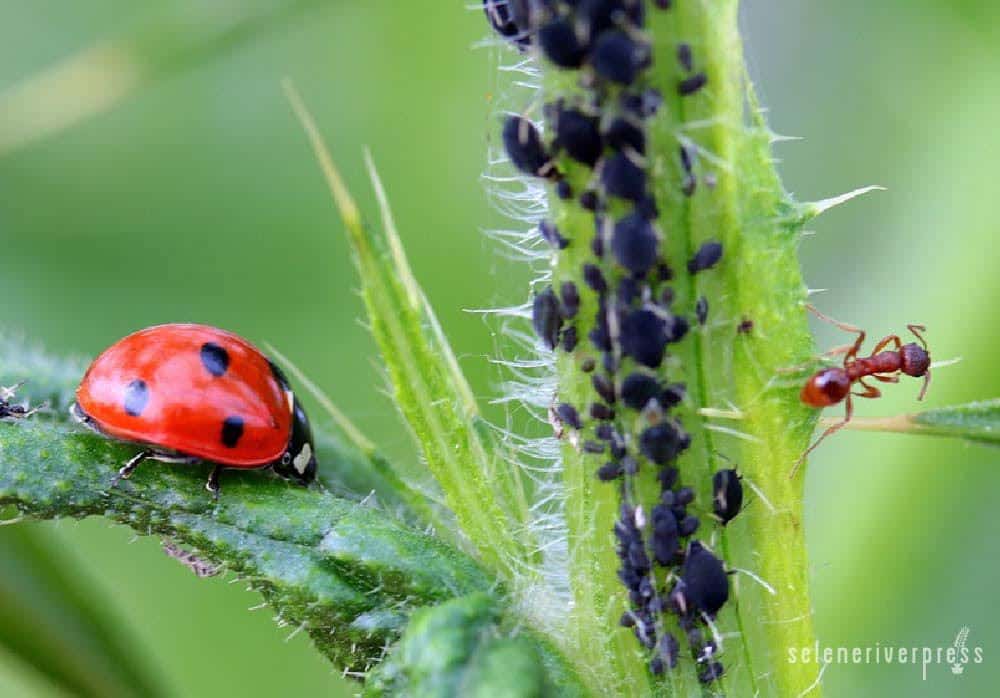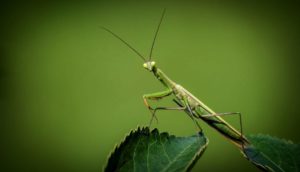Organic pest control contains a mixture of safe, preventative, and control methods designed to support the ecosystem found in nature. In general, organic pest control is less expensive than chemical pesticides. It’s also safer for you and your family, your lawn and garden, natural wildlife, and the environment as a whole.
American homeowners use over 246 million pounds of pesticides annually on their gardens and lawns, and even inside the home. In fact, studies have shown that homeowners use about twice the amount of chemical pesticides that farmers do. Single family homes are also responsible for most surface water contamination and wildlife poisonings from pesticides.
Additionally, contact with some chemical pesticides has been linked to childhood cancer, Alzheimer’s, fertility issues, and so much more. Not even the so-called “safe usage” is safe—this level is still enough to expose your body to harmful chemicals and put you at risk years later. However, there are various methods, tools, and practices you can use to control pests organically, in a safe, efficient, and economical way. Below are some of the most common and effective organic pest control methods.
#1. Preventive Methods
Maintain soil health. Sick, weak plants are much more prone to insect attack, so maintaining healthy soil is the first step in organic pest control. Amend the soil with mulch and compost, properly water your plants (not too little, not too much), and only use organic fertilizers. Compost tea is great for keeping plants healthy and happy, and it also introduces your garden to healthy bacteria. You may also want to test your soil for nutrients and soil-borne pests. For even more comprehensive results, you can pay for a professional soil test.
When it comes to soil tilling and preparations, you’ll need a tiller that can dig deep enough to turn the soil, ensuring the top organic matter is well mixed with the subsoil. A rototiller or any other small tiller will also help you expose and eliminate soil-borne pests and disease-causing microorganisms.
Design the pest out of your garden. You can accomplish this by choosing pest-resistant plant varieties, spacing your plants properly, and positioning them in conditions where they can thrive. You won’t need to battle pests if your plants don’t attract them in the first place.
Appropriately positioning your plants in the garden means placing bog plants in low-lying elevations, succulent plants in drought prone sections, and shade lovers in shady spots. This will help them develop a healthier immune system, which in turn will help them handle pests and disease-related challenges. Also, avoid crowding your plants to make it easier for insects to hop from one plant to another.
Companion planting. Companion plants that enhance each other’s growth or protect each other from pests are a very important part of your organic pest control program. Some plants are known to contain chemicals and substances that deter and repel certain insect pests. For instance, garlic drives aphids away, red chili repels whiteflies, and basil protects tomatoes against multiple insect pests. Interplant them with their respective companions in your garden to naturally drive pests out.
Silver reflective mulch. This is a fairly new but quite effective tool in the organic pest control toolbox. It’s basically a thin silver sheet you lay over the soil and around the plants. It works in two directions: the outer glare of the silver helps scare away insects and birds, while the light underneath helps repel insects that hide beneath plant shades.
Neem oil. Extracted from the fruits and seeds of neem tree, this oil is used worldwide to repel beetles, ants, caterpillars, houseflies, cockroaches, mealybugs, leafminers, snails, nematodes, mites, termites, and much more. It requires processing and refining, and you should purchase it commercially to get the best concentration for organic pest control.
Garlic oil spray. As mentioned above, garlic is good for repelling a number of insect pests. You can make your own garlic oil spray by soaking freshly minced garlic in vegetable oil for several days. To apply the garlic to plants, mix four parts water with one part garlic oil. Spray on leaves, stems, and around the root area of your plants.
#2. Control Methods
Beneficial insects. An inherent part of organic pest control, beneficial insects like praying mantises, ladybugs, some mites, lacewings, parasitic wasps, and certain nematodes will eliminate many insect problems. They’re attracted by certain herbs, including fennel, cilantro, and dill, as well as flowers like geraniums or cosmos. You can also purchase them at low cost from commercial suppliers.
Handpicking. This practice may be a bit time-consuming, but it’s an effective and inexpensive way to get rid of small populations of aphids, horn worms, and other insect pests.
Sticky traps. Attracting insects with odor and color, sticky traps ensnare them on a highly sticky surface. They’re great in the early invasion of the insect, but you can also use them to monitor insect pests.
As you can see, there are vast benefits to taking an organic approach to pest control. You improve and protect the environment, decrease the risk of disease in your family, and save money. But these tips are just a start—when you’re ready to take it to the next level and turn your garden or backyard into an oasis of self-sustaining living, check out Maximizing Your Mini Farm by Brett L. Markham. Or if you’re interested in a self-guided course on the connection between our soil, our food, and our health, you won’t do any better than Dr. Royal Lee’s masterful book From Soil to Supplement.





